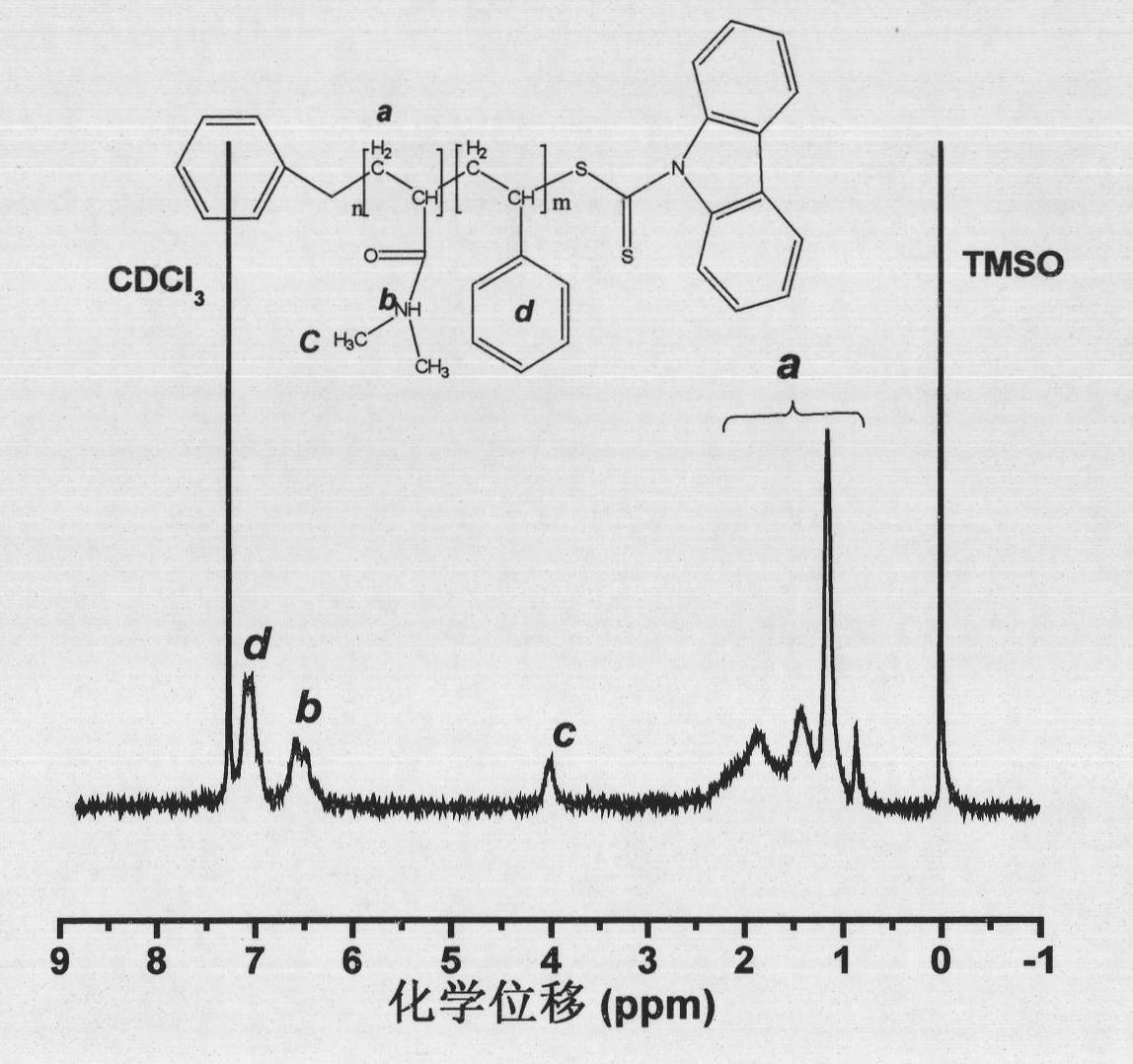Preparation method of magnetic fluorescence dual functional thermo-sensitive nano particle
A nanoparticle and fluorescent nanotechnology, which is applied in the field of preparing magnetic and fluorescent bifunctional temperature-sensitive nanoparticles, can solve the problems of poor polymer designability, uncontrollable molecular weight and distribution, and unstable use, so as to reduce the quenching effect, Non-toxic toxicity, avoiding the effect of agglomeration
- Summary
- Abstract
- Description
- Claims
- Application Information
AI Technical Summary
Problems solved by technology
Method used
Image
Examples
Embodiment 1
[0044] Example 1: Immobilization of RAFT reagents on the surface of magnetic nanoparticles
[0045] Synthesis of Magnetic Fe by Co-precipitation 3 o 4 nanoparticles, and then use Hydrolysis of Tetraethyl Orthosilicate to Magnetic Fe 3 o 4 Nanoparticles are encapsulated to form Fe 3 o 4 @SiO 2 core-shell structure.
[0046] Take 1.0g Fe 3 o 4 @SiO 2 Add 0.5 mL of 4-chloromethylphenyltrimethoxysilane to 20 mL of toluene that has been dehydrated and dried at 95 ° C, flow argon for 20 min, reflux for 24 h, and collect by centrifugation. With a large amount of toluene and acetone for multiple ultrasonic dispersion-centrifugal washing, the chloromethylated product Fe 3 o 4 @SiO 2 -Cl was vacuum-dried at room temperature for use.
[0047] In DMSO (20mL) solution with 0.13g KOH dissolved, add 0.39g carbazole, after stirring for 1h, slowly add 0.2mL C 2 S, after the resulting red solution was stirred at room temperature for 12 hours, the chloromethylated product Fe of t...
Embodiment 2
[0048] Example 2: Using N-isopropylacrylamide (NIPAM) as a monomer to synthesize temperature-sensitive nanoparticles with dual functions of magnetism and fluorescence.
[0049] Take monomer (NIPAM) 0.5g, Fe 3 o 4 @SiO 2 - BCBD 100mg (~0.014mmol RAFT), sacrificial RAFT reagent (BCBD) 2.7mg, AIBN 0.21mg, isopropanol 2.5mL in a 5ml ampule bottle, and replace the oxygen in the system with Ar gas, seal the ampule bottle and place Carry out the reaction (12-70h) according to the predetermined time in an oil bath at a constant temperature (60°C);
[0050] After the reaction, take out the sealed tube, cool it with cold water immediately, open the sealed tube, dissolve and dilute with tetrahydrofuran, then disperse-centrifuge 4 times, pour the supernatant into petroleum ether to precipitate, and the obtained polymer is characterized by GPC; and magnetic bifunctional temperature-sensitive nanoparticles (Fe 3 o 4 @SiO 2 -PNIPAM).
[0051] From figure 1 It can be seen that after g...
PUM
 Login to View More
Login to View More Abstract
Description
Claims
Application Information
 Login to View More
Login to View More - R&D
- Intellectual Property
- Life Sciences
- Materials
- Tech Scout
- Unparalleled Data Quality
- Higher Quality Content
- 60% Fewer Hallucinations
Browse by: Latest US Patents, China's latest patents, Technical Efficacy Thesaurus, Application Domain, Technology Topic, Popular Technical Reports.
© 2025 PatSnap. All rights reserved.Legal|Privacy policy|Modern Slavery Act Transparency Statement|Sitemap|About US| Contact US: help@patsnap.com



